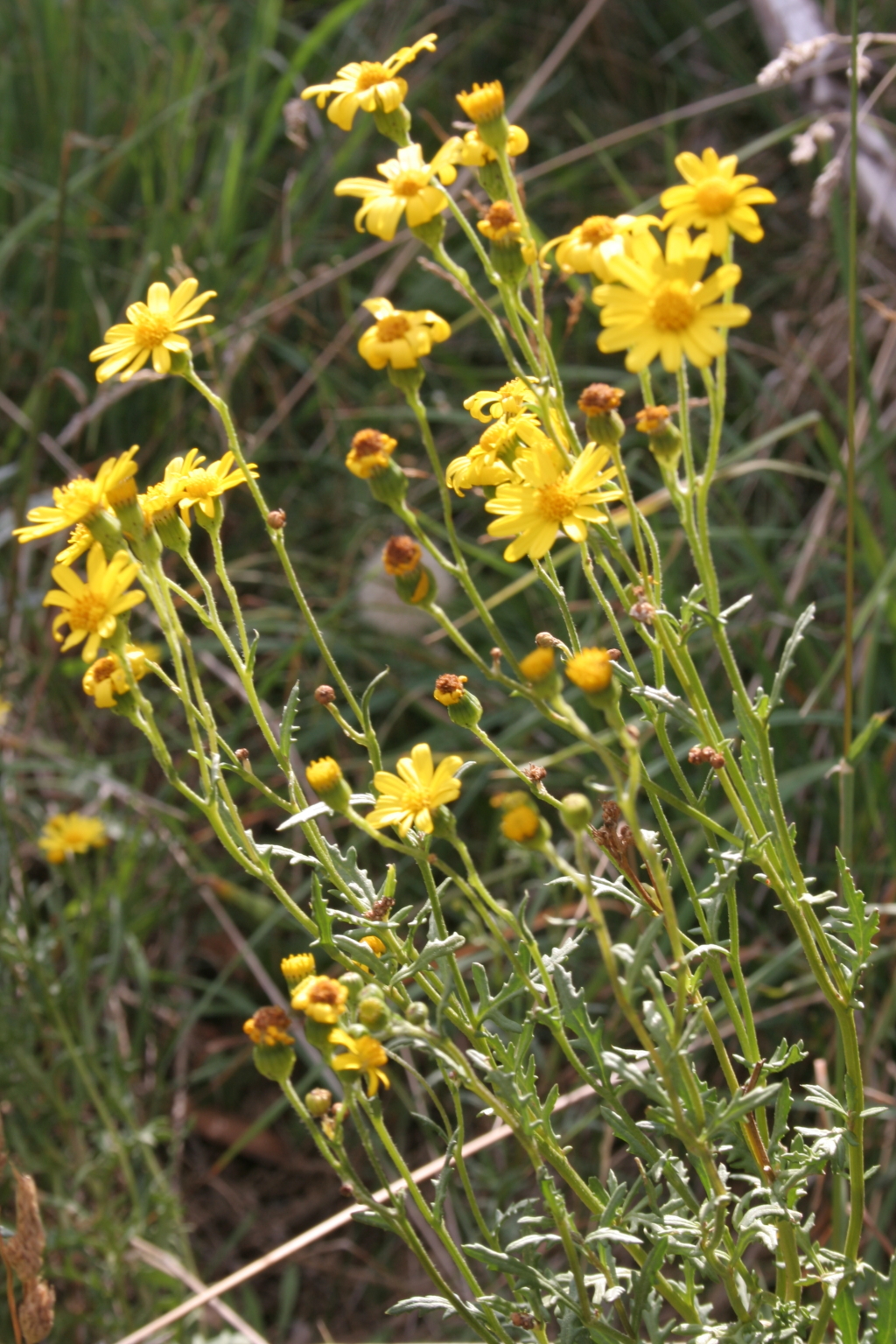Senecio pinnatifolius var. pinnatifolius
Erect, sprawling or prostrate herb to c. 1.5 m high, with tap-root usually moderately to well-developed. Mid-stem leaves 1.5–10 cm long, undivided to bipinnatisect, thin, fleshy or succulent. Peduncles glabrous or with long hairs; involucre 3.0–7.5 mm long; bracts mostly c. 13 or c. 20, with apex purple; stereome slightly to moderately fleshy or succulent; bracteoles 6–10, ovate to narrow-ovate, 1.0–2.0(–2.5) mm long, 0.3–1.2 mm wide, with margin glabrous or with generally weak hairs. Cypselas 2.0–4.5 mm long; hairs of cypselas of ray florets mostly not exceeding pappus-ring. Flowers Aug.–Mar.
MuM, Wim, GleP, VVP, VRiv, GipP, WaP, CVU, GGr, DunT, NIS, EGL, EGU, HSF, HNF, Strz, MonT, VAlp. Also WA, SA, Qld, NSW, Tas. Scattered throughout the state in a variety of habitats including coastal dunes, forest, woodland and shrubland, in dry and wet regions.
This variety is the most morphologically variable of the currently acknowledged Senecio pinnatifolius varieties. Most of the more readily recognisable forms within this variety do not occur in Victoria, but a reasonably recognisable form from the north-east has large capitula with c. 20 involucral bracts and filamentous leaf segments (Thompson 2005).
The name Senecio rupicola A. Rich. has been applied to plants with relatively large usually 2–3-pinnatifid leaves with rachis and segments 2–3 mm wide or more. In Victoria, these forms occur primarily in moist, often montane forests, but they are so completely linked with the typical form (and perhaps intergrade with var. alpinus) that formal recognition at any rank seems superfluous.
Walsh, N.G. (1999). Senecio. In: Walsh, N.G.; Entwisle, T.J., Flora of Victoria Vol. 4, Cornaceae to Asteraceae, pp. 941–965. Inkata Press, Melbourne.
 Spinning
SpinningMisapplications
Thompson, I.R. (2005). Taxonomic studies of Australian Senecio (Asteraceae) 5. The S. pinnatifolius/S. lautus complex.. Muelleria 21: 23–76.



